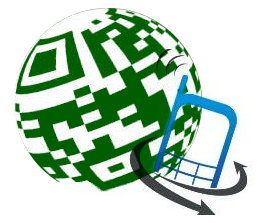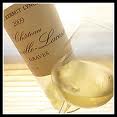Saved in Other sites of interest, Sour Grapes recommends, Wine, Wine websites
AVIN, a new ISBN-like cataloging system for the wines of the world has far more interesting applications and implications than this first sentence could do justice to. Let’s get straight in, shall we?
What’s an AVIN?
AVIN is essentially the equivalent of an ISBN for wine bottles. That is a unique number which identifies a bottle of wine by producer, grape, vintage. Staying with ISBN and books for a little longer, how often have you gone into a bookshop looking for a copy of 978-1862058309? So, for most punters, it’s not needed. But on the business end, for Waterstones and the like who need to stock the book, catalogue it and sell it, it becomes really useful.
The problem AVIN solves
Back to wine, when you’re trying to remember a nice wine from Portugal, France or anywhere else you had, you may have misheard the name, missed an accent, or used Domaine where it should have been Chateau. That, and many wines or properties having similar spellings. All this is a recipe for ending up with the wrong wine.
This could potentially lead to a wine from somewhere completely different.

AVIN: Goolge it. Hmmm. Intrigued.
Enter the AVIN, an innovative design from the Adegga.com, the social media wine tasting site.
AVINs make a specific wine easier to find. An AVIN is a 13 digit number which looks like this AVIN6452997073019. Th number is stored in a large database with all the details of the wine. A wine can then be referred to by its AVIN through Google, stock control systems or anywhere else. It starts to become more interesting when an AVIN is blended with something else.
AVINs in the wild: AVIN plus QR Codes
Just one of the interesting ways in which AVINs are being exploited is by QR codes.
Another brief explanation needed here – a QR code is a two dimensional barcode which can be used for a number of things and scanning is a core part of it. Anyone with a decent smartphone can use it to scan the QR code to lead them to more information on whatever the code relates to. Scanning the code would simply lead the punter to a website on the phone’s browser.
It could be an ad on a billboard or a newspaper so it’s a great way to get your ad to work harder and move beyond the physical constraints of ad space as well as provide a good hard measurement of how effective your ad is at truly engaging people. A different QR code in different publications could provide a good A/B test of which publication is better suited to the demographic you want to reach.

Scanning a QR - much easier than typing it in.
The same principle also applies to QR codes on business cards or indeed on the back label of a bottle of wine. Aside from scanning into inventory systems, for both producer and consumer there are some great possibilities with a QR code on the back label.
One of the problems with a wine label is the small finite space you can work with. You can get a tasting note or a short story of the place or the people who made the wine, but that’s as far as you can go because of the physical limitations.
However, by providing a QR code, you are creating a dynamic or interactive wine label which can bring the wine drinker virtually anywhere. Some of these virtual designations could be:
- an online video of the winemaker describing where or how it was made
- recipe suggestions of what the wine could go with
- a price comparison site like wine-searcher.com which would allow you to see if you were getting a good deal
- a wine community which shows what people like you thought of the wine
- an instant discount to the drinker for showing an interest in the wine while in the shop.
All this is possible, literally within seconds as you hold the wine in your hand before you buy it.
Where the AVIN and QR code lead to is entirely up to the owner of the label. At the moment, if a wine doesn’t have an AVIN or QR code, it’s given one “automagically” when a tasting note is left on social tasting wine website, adegga.com.
As you can see from the examples above, this opens wine up to some amazing possibilities whether it is connecting to a younger tech-savvy cohort of drinkers or even those established wine drinkers who still can’t understand German wine labels.
So, the AVIN system is one example of the democratisation of wine, where the Gen Y drinker doesn’t know or doesn’t trust the wine critic or the Decanter/IWC or other badge.
Who has signed up?
A growing number of wineries and even regions have already adopted the AVIN system with 1 million wine labels printed. My prediction is that the more forward thinking wine producers will begin to do so in the coming years.
More information
- See the AVIN website.
- Adegga.com, social media wine site
Source:
http://www.sourgrapes.ie/2010/06/12/an-isbn-for-wine-dynamic-back-labels/






































































No comments:
Post a Comment